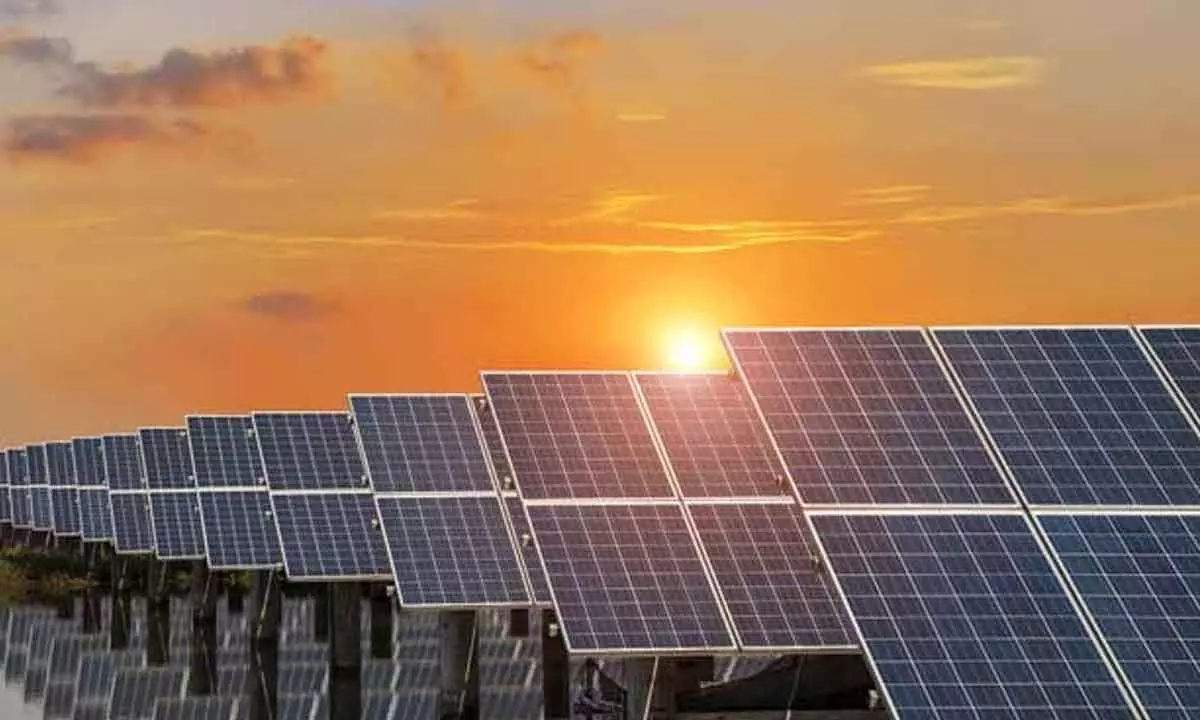A 20+ GW a year market in sight in India’s best solar year
image for illustrative purpose

Outlook for the future may still be bright and the pipeline may still be strong, but India’s solar capacity installations nosedived in the calendar year (CY) 2023. India installed 7.5 gigawatts (GW) of solar capacity in the CY 2023, which is a 44 per cent drop year-over-year (YoY) from 13.4 GW installed a year before. In Q4 2023, 1.8 GW of solar capacity were added marking a 6.6 per cent decrease compared to the 1.9 GW installed in Q3 2023. Installations fell 41 per cent compared to 3.1 GW installed in Q4 2022. When it comes to overall renewable energy, the country’s installed renewable energy capacity, including large hydropower projects, stood at 179.5 GW, accounting for 42 per cent of the overall power mix at the end of December 2023. Solar energy projects accounted for 48.5 per cent of all new power capacity that was added in 2023, according to a recent study by Mercom India Research. As of December 2023, solar energy accounted for 16.9 per cent of India's total installed power capacity and almost 40.1 per cent of the total installed renewable energy capacity as of 2023. Wind and solar made up 66.7 per cent of new power capacity additions in 2023.
The drop in solar capacity installations can be attributed to extensions granted to several large-scale projects and delays primarily due to land and transmission issues, among others, which, in turn, impacted capacity additions during the year. Large scale solar installations were the worst-hit. Large-scale solar accounted for 77.2 per cent of annual solar capacity additions and rooftop solar contributed 22.8 per cent. In 2023, large-scale solar installations fell 51 per cent YoY to 5.8 GW from 11.7 GW in 2022. In Q4 2023, India added 1.8 GW of solar capacity, a 6.6 per cent decrease compared to the 1.9 GW installed in Q3 2023. Installations fell 41 per cent compared to 3.1 GW installed in Q4 2022. Compliance with grid connectivity regulations, projects in line to secure power evacuation in the habitat of Great Indian Bustard and project extensions continued to impact quarterly capacity additions. Compliance with amended grid code provisions added to power evacuation challenges, leading to project delays.
The drop in solar capacity installation was notwithstanding the fact that in 2023, 57 GW of tenders were floated, up 50 per cent compared to 38 GW in 2022. In 2023, 22 GW of projects were auctioned, up 82 per cent YoY. Falling module prices, a steady supply of balance of systems (BoS) and modules and stable BoS prices were factors behind the uptick in auction activity in 2023. Fall in installations was not unexpected, experts pointed out. However, the good news is that the outlook is bright as a significant pipeline of large-scale projects is slated for 2024, setting the stage to make it the best year for solar in India by a considerable margin. Barring any setbacks on the policy front and supply disruptions, there are reasons to be upbeat and optimistic that India is finally on the cusp of becoming a 20+ GW a year market.

